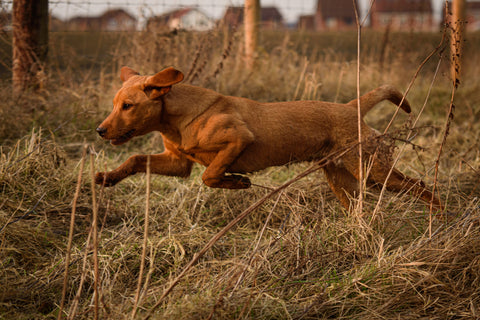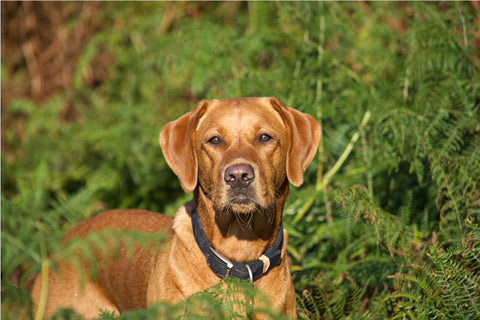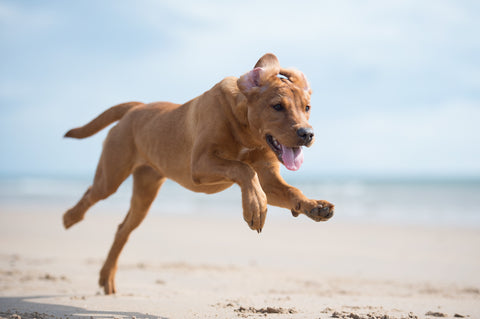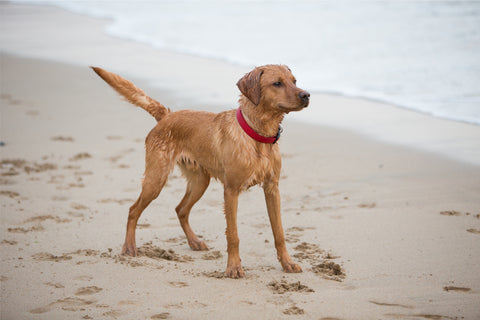Activity Level: High
Hypoallergenic: No
Social Ability: Highly Social
Skills: Retrieving, Service, Swimming
Intelligence: Above Average
Ideal Climate: Temperate, Low Humidity
Labrador Retrievers have topped the charts of popular dog breeds in the US for decades, and for good reason. These eager canines, as their name suggests, enjoy retrieving and fetching, making them playful domestic pets and outstanding service animals. A sweet face and loving nature will be quick to steal your heart– almost as quick as they’ll fetch anything you toss their way.
Breed Overview
 Labs’ famously friendly demeanors make them great additions to multi-pet homes and big families; they also have an eagerness to fulfill a role for their owner, making them outstanding service animals as well. Labrador Retriever health issues are few but often include congenital joint and ocular conditions.
Labs’ famously friendly demeanors make them great additions to multi-pet homes and big families; they also have an eagerness to fulfill a role for their owner, making them outstanding service animals as well. Labrador Retriever health issues are few but often include congenital joint and ocular conditions.
Origin: Lab Retrievers are the ancestors of Portuguese and British working dogs in the 16th century. St. Johns dogs were created at the same time through extensive breeding practices, and they were brought to Newfoundland, Canada where they were taken in as pets more than working dogs; however, Labs still retain many service animal positions thanks to their loving nature.
History: In the early 19th century, the British aristocracy began adopting Lab Retrievers en masse, seeking their beloved eager demeanor and strong work ethic. The 1880’s nearly saw extinction for this breed as Canadian government restrictions increased, but English breeders helped save them by introducing Lab Retrievers to the US. In 1917, the American Kennel Club officially recognized the breed, and ever since they have been a household favorite.
Breed Attributes

Temperament: Friendly & Playful – According to the Breed Standard, "the ideal disposition is one of a kindly, outgoing, tractable nature; eager to please and non-aggressive towards man or animal...The Labrador has much that appeals to people; his gentle ways, intelligence, and adaptability make him an ideal dog." Of course, every dog is different, but this breed generally exhibits a sweet and loving demeanor.
Personality: Sweet & Eager to Please – Good with other animals and children, Lab Retrievers enjoy ample living space and plenty of toys. These energetic dogs may not enjoy lap-sitting, but they likely won’t shy away from a friendly cuddle.
Ideal Owner: You! – Fantastic for first-time dog owners and for families, these highly-adaptable canines thrive with an owner who loves to play, snuggle, and generously give attention to their pup. Ideally, these dogs should have access to plenty of both indoor and outdoor space.
Fur Care

Grooming: Low-Maintenance – A Red Labrador Retriever’s short, thick fur needs only occasional baths to stay healthy and shiny. Specifically formulated Hypoallergenic Shampoo is ideal for these light-furred canines to help maintain a healthy, shiny coat.
Shedding: Moderate – This breed exhibits moderate shedding most of the year with more shedding in moulting season. The level of shedding may be managed with regular brushing, baths, and skin care. Supplements such as nourishing fish oil can help keep the skin and coat hydrated, thereby helping reduce excessive shedding.
Colors: Yellow/Golden, Chocolate/Brown, Black, Red
Health
 Common Issues: Due to a genetic predisposition, dog hip dysplasia and elbow dysplasia are common concerns. For this breed of dog, hypothyroidism may also be common, which must be addressed with veterinary care. Regular vet visits are recommended for all breeds, and a simple evaluation or genetic testing can assess any potential issues the dog may have.
Common Issues: Due to a genetic predisposition, dog hip dysplasia and elbow dysplasia are common concerns. For this breed of dog, hypothyroidism may also be common, which must be addressed with veterinary care. Regular vet visits are recommended for all breeds, and a simple evaluation or genetic testing can assess any potential issues the dog may have.
Nutrition: Lab Retrievers, like all dogs, need high-quality food with plenty of protein to keep up with their high activity levels. Supplementation may contribute to healthy joints, skin, and eyes, as this breed is predisposed to some health concerns. Learn how dog supplements (like a wholesome multivitamin) can support their health for years to come.
Lifespan: 12-14 years
Physical Activity
 Training: Highly Trainable – Early training is key to raising an obedient Lab; their instinct to complete tasks and follow their master makes them great at service and fetching, but it is important to establish healthy habits as early as possible.
Training: Highly Trainable – Early training is key to raising an obedient Lab; their instinct to complete tasks and follow their master makes them great at service and fetching, but it is important to establish healthy habits as early as possible.
Exercise: Highly Active – High energy levels mean high exercise requirements. This breed needs plenty of exercise and active play to expel their energy. Labradors are also known for their love of swimming, so a trip to just about any body of water is a great time for a Lab.
Many pet owners know that pent-up energy often leads to destructive behavior, which is why veterinarians often recommend more complicated toys to keep the dog occupied. A treat-dispensing toy that requires active engagement provides a small reward for playing with appropriate toys to help direct their energy to healthy places.

Red Labrador Retrievers are highly active and social canines, with sweet faces and even sweeter hearts. With the right combination of engaging toys, outdoor play, and cuddle time, this dog will melt your heart in seconds.

